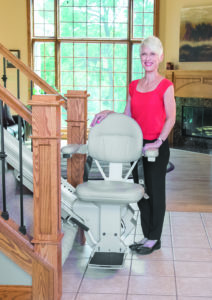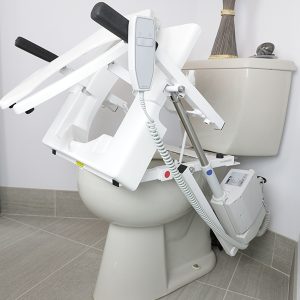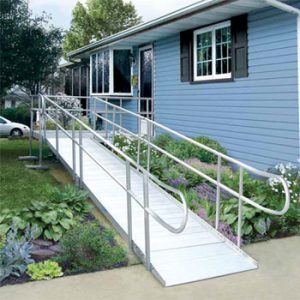The coronavirus outbreak has been a trying time for all families with a loved one in a senior living facility. Older adults have the highest risk of developing severe and potentially fatal complications from the virus, and nursing homes have been linked to 40% of all COVID-19 deaths in the United States, according to The New York Times.
In order to curb outbreaks, most facilities have restricted or banned visitors. While this has been an important step to keep at-risk residents safe, it has also added to the strain being felt by families. Seniors face risks not just from the virus itself but also from the negative effects of social isolation, which the Centers for Disease Control (CDC) notes include a 29% higher risk of heart disease, 32% increased risk of stroke, and 50% increased risk of dementia. In what feels like a lose-lose situation, many families are asking the same question: is it safer to bring seniors home?
Not everyone has the space, time and resources required to house and care for elderly family members. If people in your family are going to work or interacting with others socially, for example, home life might be less safe than a nursing home with strict protocols. But the LA Times reports some public health figures have come forward urging families that can do so to remove older parents and grandparents from residential facilities. If this is the route you choose, you’ll need to make some adjustments to your home to ensure that it is safe and comfortable for your loved one.
Coming home
What’s the process?
Getting a senior out of a nursing home or assisted living facility is typically a straightforward process, although this depends primarily on the level of care they need on a daily basis. The first step is to talk to the facility and find out what needs to happen in order for your family member to be discharged.
If a legal guardianship is in place, the responsible person will need to give their permission for the discharge to occur. You should also have in-depth discussions with your loved one’s doctor to make sure they can get sufficient medical care at home and find out what costs may be associated with this.
Finally, don’t forget to ask what the process is for readmission once the situation has become safer, or if you can no longer provide adequate care. After a senior has given up their space in a facility, it may be difficult to get it back if the spot has already been filled. Many facilities have waiting lists that are months or years long, and moving out could put your family member back at the bottom of this list, even if it’s only temporary.
Health Safety
Once your loved one has made it home, it’s essential to ensure that everyone in the household is following safety guidelines. If all family members plan to continue sheltering in place even as lockdown restrictions are lifted, the risk of the virus entering the home should be fairly low.
However, this is estimated to increase drastically if your family includes adults who must return to work or children who are going back to school. Current CDC figures estimate that 40% of all COVID-19 cases are asymptomatic, which means that someone in the home could easily contract the virus without realizing it and pass it along to an elderly parent or grandparent.
If you do need to venture out while caring for an at-risk senior, make sure to follow CDC safety guidelines. These include:
- Avoid contact with anyone who has shown COVID-19 symptoms or been potentially exposed to the virus in the past 14 days.
- Keep at least six feet of distance from others in public.
- Wear a mask when physical distancing may be difficult or impossible.
- Wash your hands with soap and water for at least 20 seconds before and after social interactions, when using the bathroom and before eating.
- Don’t share items with others and limit contact with common surfaces.
Home Safety
Most houses aren’t specifically designed with senior safety in mind. Elderly family members have certain mobility limitations that may require slight modifications to your home. However, improving accessibility is less complicated than you might assume. Below, we’ve included a room-by-room guide to making your home easier to navigate for older parents or grandparents.
Home Modifications
Stairs/Walkways
- Make sure that hallways and staircases are well-lit, with light switches or motion-detectors located at either end.
- Remove tripping hazards from walkways.
- Check railings to ensure they are secure and won’t wobble or budge. Railings should be installed on both sides of every staircase.
- Put non-slip treads on stair steps and lay down non-skid mats under rugs.
- Have a chair lift installed if access to upper floors is required for seniors with low mobility.

Kitchen
- Provide a food preparation surface that can be used while seated.
- Install a kitchen faucet that operates with a single lever instead of individual knobs.
- Store commonly used items in easy-to-reach cabinets.
- Make sure your ABC-rated fire extinguisher is on hand and hasn’t passed its expiration date.
Dining Room
- Adjust the dining table if necessary to allow enough space for wheelchair or walker access on at least one side.
- Provide a dining chair with side arms.
- Keep dishes used for everyday dining in a sideboard or on a low shelf.
Family/Living Room
- Arrange furniture so that there is plenty of room to move around.
- Get rid of clutter by putting items into storage or donating them.
- Make sure wires and cords are tucked out of the way where they can’t be tripped over.
- Purchase a senior-friendly universal remote with large, simplified buttons.
Bedroom
- If possible, give your oldest family member a bedroom located on the ground floor of the home to avoid the use of stairs.
- Consider a bed with railings to assist with balance and mobility.
- Keep curtains open during the day to let in natural light, which aids in better quality sleep.
- Install light switches that can be pushed to turn lights both on and off.
- Place the bed in a position where it provides easy access to the bathroom without requiring assistance.
Bathroom
- Give seniors access to a bathroom with a walk-in style shower.
- Install railings near the toilet and shower.
- Replace the showerhead with an adjustable handheld model.
- Put down no-slip mats inside and around the shower.
- Purchase or install a shower seat.

Basement
- Avoid storing necessary items in the basement to reduce the number of trips up and down the stairs.
- If access to the basement is required, make sure the stairs are well-lit and fitted with no-slip treads.
- Install a phone in the basement for emergency calls.
Front/Backyard
- Install lights around all outdoor paths.
- Keep walkways clear of overgrowth and other tripping hazards.
- Add an outdoor ramp if needed to accommodate step-free access for a wheelchair, scooter, or walker.
- Replace turning door handles with lever-operated models.
- Make sure doors are easy to lock and unlock from the inside and outside.

Extra Precautions
Medical Alert System
Even when you’re sharing a home with an elderly family member, you probably won’t stay by their side 24 hours a day. A medical alert system is a good idea for seniors who might move around the home frequently; this gives everyone peace of mind while preserving their mobility. These devices are easily activated with the push of a button if your loved one experiences an emergency and can’t call for help. Many will automatically detect falls, which one in four Americans age 65 and older experience each year, and some can even monitor vital signs.
Security System
If you don’t already have a security system installed, consider adding one. Dozens of companies offer DIY security solutions that can be set up in minutes by installing your own cameras and sensors. Most offer smartphone apps that allow you to monitor your home from anywhere and receive notifications if anything out of the ordinary is detected. Even if you do already have a home security system in place, think about beefing it up by integrating smart home devices like smoke alarms and carbon monoxide detectors.
Kids/Pets
Bringing an elderly family member home can be an especially big adjustment for homes with small children, as everyone acclimates to the new living situation. Kids might have questions about why their grandparent is moving in, so try to answer them truthfully without causing too much fear regarding the ongoing pandemic.
Make sure you review safety information with children and hone in on the importance of following guidelines to keep their loved one safe. Ask kids to wash their hands before visiting grandma or grandpa and have them stay away if they’ve recently complained of not feeling well. Incorporating picking up toys after playtime as part of their daily routine can keep floors free of clutter that might be stepped or tripped on.
Dogs and cats can also pose a foot-traffic hazard, so try to keep them out of the way as much as possible. Consider keeping pets in a separate room behind a closed door or baby gate, and make sure litter boxes are kept clean and items like toys and tennis balls aren’t left underfoot.
The Benefits
More Family Time
You might be thinking about moving a senior into your home for their health and safety, but did you know that other family members can benefit, too? Research has shown that kids experience more emotional stability when they spend more time with their grandparents, and young adults are less likely to experience depression. For all members of the household, spending time with an elderly family member during their golden years is sure to create lifelong memories that simply can’t be replaced.
Tax Credits
If an elderly parent or grandparent moves in with you in order for you to become their primary caregiver, you may be able to claim them as a dependent on your taxes. There are a few restrictions on this; for example, AARP indicates the senior’s income should be less than $4,200 for the year (based on the 2019 tax period) and you must be financially responsible for at least half of their living expenses.
If their medical costs total more than 10% of the total gross income listed on your tax return, you can also write these off as a deduction. Just make sure you keep careful itemized records of expenses and retain medical bills and receipts.
Home Insurance
Bringing an elderly family member into your household also means it’s time to review your home insurance policy. If medical personnel will frequently visit the home to provide care, you may need to increase the amount of liability insurance you carry. The same applies if you plan to hire contractors to carry out home modifications for better accessibility.
Depending on what changes you make to your home, these may also affect your home insurance rates. For example, installing or updating a home security system will usually lead to lower premiums. You should let your insurance company know about major installations like a wheelchair ramp or chair lift to make sure the replacement value of these modifications are covered in case of damage. Medical equipment such as hospital beds can also be expensive to replace and should be factored into coverage.
Bottom Line
Taking a senior out of a nursing home or assisted living facility amid the COVID-19 pandemic isn’t as easy as just picking them up and bringing them home. There’s a bit of work and planning involved in making the necessary preparations, and you may face additional costs if modifications need to be made to your home. But for families that are concerned about their loved one’s well-being in the face of a disease with a high potential for fatal consequences, the costs can be well worth it to keep them safe from harm.
For more details on how to make your home more comfortable and accessible for elderly family members, refer to the AARP’s HomeFit Guide. The guide provides additional room-by-room instructions and modifications for specific needs like impaired vision and low mobility. You’ll also find helpful worksheets and checklists to help you conduct a review of your home. The National Association of Home Builders provides senior-friendly home modification training for contractors through the Certified Aging-in-Place Specialist (CAPS) program. Access Elevator has CAPS certified professionals on staff. For more information, call 844-945-4387 or visit www.allaboutaccess.com.



